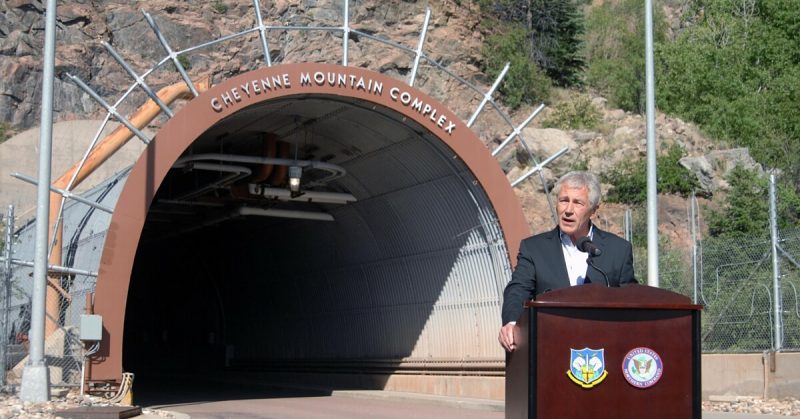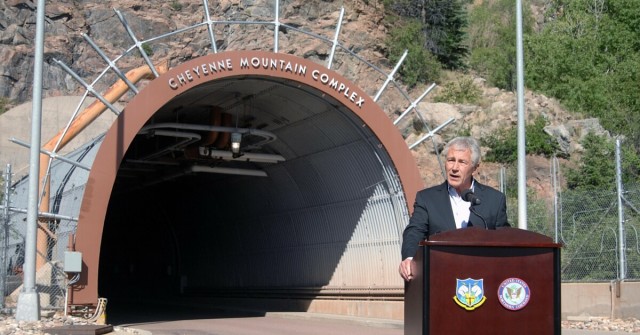The cold war may be long over, and certain installations have been abandoned, but the powers that be still have and maintain bunkers in preparation for the ‘end of times’.
Bunkers, both current and defunct, were built to deflect blast waves, cope with the under-pressure from shock waves, and block radiation. The reason bunkers are underground is that the soil provides additional radiation shielding and protection from damage to the ears and internal organs from the shock wave. The doors are as strong as the walls, if not stronger. These structures can survive hundreds of psi, as opposed to a typical house, which has only 3 psi.
Some bunkers are built over springs (of the coiled rather than water variety) so that they absorb ground shocks. Otherwise, such shocks can jiggle the bunker walls by centimeters over milliseconds.
Strength and flexibility aside, bunkers are not indestructible. There is such a thing as a bunker-busting warhead. The Germans hit the Belgian Fort d’Aubin-Neufchâteau in the early 40s with success and the British set the stage for modern bunker-busters that work by creating earthquake conditions adjacent to the bunker, causing a pit into which even the most well-built bunker will collapse. Of course, there are old fashioned methods of affecting the inhabitants, like shutting off ventilation or attacking weakened access points, but if the situation is serious enough that everyone’s gone underground, attack isn’t all that likely. Or at least, we can hope that it isn’t.
So where should you hole up when the SHTF? Supposing you can get in, which you likely can’t, here are the largest, strongest bunkers . . . that aren’t classified, that is.
7. United Kingdom: Burlington Bunker, a.k.a. Cold War City, Stockwell, Subterfuge, Turnstile, Site 3, Hawthorn Central Government War Headquarters
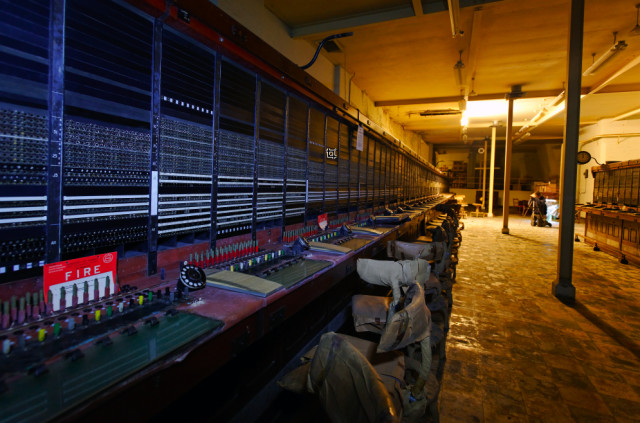
Located in Corsham, Wiltshire, this bunker dates to the 1950s and takes up 35 acres. It was built to house 4000 people in the event of nuclear strikes. The inhabitants would have been able to live there, 100 feet underground, for three months.
When the cold war ended, Site 3 was used as a decoy site until it was declassified in 2004. It was never used and when it went up for sale, it still held ashtrays, tea sets, and more unboxed and unused.
The site in sleepy Corsham, a cute English village, was chosen because of its limestone bedrock. The site is adjacent to the Tunnel Quarry, part of the Ministry of Defense Central Ammunitions Depot. The quarry is connected by rail to a main line that runs to London. If there had been a threat of nuclear event, high-level government officials and the Royal family would have hopped a train and debarked underground at the bunker site. The prime minister and cabinet members would have made use of the helipad.
The nearly mile long bunker included an underground lake, doctor’s and dental offices, and all of the information needed to attempt a rebuild of the country in maps, books, and a database. The Prime Minister had his own suite.
The bunker was so large that battery operated vehicles would have driven down corridors with names like First Avenue. There was even a phone system (updated as recently as 1989) for communicating with the outside world. It also included a bakery, just in case, you know, you might want a scone at teatime.
Site 3, The Burlington Bunker, began its slow demise in the 1990s when the British government refused upgrades and repairs that would have cost £40 million. It didn’t help that conspiracy theorists had an inkling of its existence and that they believed it was the UK version of Area 51. After years of pushing off those conspiracies and of trying to maintain the site at £500,000 a year, the MOD threw in the towel and declassified it in 2004.
6. United States: The Greenbrier Bunker
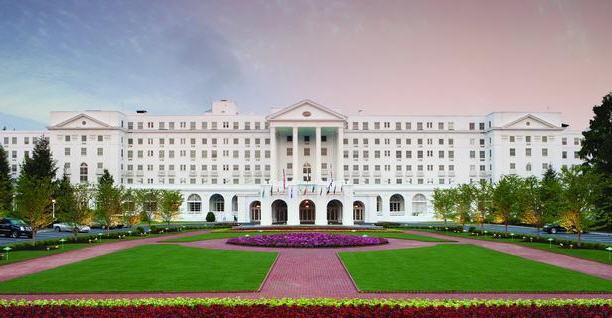
The Cold War era United States government liked a little luxury with their security. The Greenbrier “Hotel” was an incredibly large resort for the very rich, located in the mountains of West Virginia. To this day, it is a playground for those with money to spare. The smallest room runs $228 a night.
The Greenbrier had been around a long time and had put up several presidents for a night or two, years before its underground was dug out as a bunker site. In fact, the U.S. military used it as an army hospital and as a detention site for Axis diplomats (German and Japanese) during WWII. Its original owners bought it back after the war. The wealthiest of the jet set were overjoyed and attended the reopening ceremonies – celebrities including the Duke of Windsor and Wallis Simpson and the Kennedy clan.
White Sulphur Springs, WV isn’t exactly in the heart of any kind of hustle and bustle, so it’s easy to see how, with so many people of influence frequenting the place, it was selected to be the secure relocation area for the United States government during a Nuclear War.
A deal was struck in the late 50’s in which the government would add an addition to the resort for the privilege of constructing the bunker beneath it and re-configuring areas of the hotel for its purposes. Also, in the agreement was the permission of the entire resort to be given over to the government’s purposes in the event of a nuclear situation. The dirt removed for the bunker was used to build a golf course, and also as fill dirt on a local airport runway.
The bunker was enormous. It was meant to house 1000 people, including the members of Congress. An auditorium in the structure had 470 seats so that Congress could still meet under the worst of outside world conditions. Joint sessions of Congress would be held in the room called The Exhibit Hall, which measured 89X186 feet with a 20-foot ceiling supported by 18 columns.
Rooms used by hotel guests as a business meeting areas had secret blast doors, two of which were sized to let vehicles through. The Exhibit Hall itself was always visible to guests, they just didn’t know what it was. Well, at least not until the Greenbrier was exposed by a reporter.
Ted Gump, of The Washington Post, wrote an article in 1992 that revealed the use of the Greenbrier as a relocation site for the government in the event of nuclear war. It included quotes from men who helped build it and claimed hotel employees, blueprints, and the testimony of construction workers as sources. The site was immediately decommissioned.
5. Russia: The Moscow Metro
The Moscow Metro bunker known as Metro-2 may be fiction, but there’s a whole lot of support that it’s fact.
The bunker rose to the light in a 1992 novel by novelist and screenwriter, Vladimir Gonik. The book, Preispodniaia (Abyss), is set in a bunker secreted away in the subway systems of Moscow. Parts of the book came out in installations in the Sovershenno Sekretno newspaper. The author and the editor of the newspaper stated in interviews that they had been collecting information over 20 years about bunkers connected by underground rail and that they had heard about them in reference to the name “Metro-2”.
Gonik was writing this novel during the Cold War. He said that very sensitive information had been left out of the book or had been purposely altered. He claims he was able to collect all of this info through his position as a Ministry of Defense doctor.
Other Russian journalists have referenced Metro-2 and they claim that its existence is “neither confirmed nor denied” by the subway or by the Federal Security Service (FSB). Some say that an underground bunker tour given by the government is meant to give misinformation and to deflect interest.
No matter, the U.S. government believes in the Metro-2. Below is an excerpt from a 1991 report:
“The Soviets have constructed deep-underground . . . interconnected by a network of deep interconnected subway lines that provide a quick and secure means of evacuation for the leadership. The leadership can move from their peacetime offices through concealed entryways in protective quarters beneath the city . . .These facilities are intended for the national command authority in wartime. They are estimated to be between 200 m (660 ft) and 300 m (980 ft) deep, and can accommodate an estimated 10,000 people. A special subway line runs from some points in Moscow and possibly to the VIP terminal at Vnukovo Airfield . . .”
Even a few Russian officials will admit to the existence of what has been codenamed “D-6” – an underground bunker paralleling the Moscow Metro, started by Joseph Stalin, and maintained today by the Main Directorate of Special Programs and the Ministry of Defense.
“This is an extensive network of tunnels and an emergency command center in case of war, where you can command the nuclear forces of the country. It can hide a lot of people – its maintenance was necessary. I know that the “Metro-2″ has branches that go to the suburbs so that the command could move away from the epicenter of a nuclear attack.” – Mikhail Poltoraninin, former minister under Boris Yeltsin
“Its underground transport communications connecting the Kremlin with the command posts, which are designed to ensure the stable operation of the senior military and political leadership in times of armed conflict, including a nuclear conflict. This is a gigantic system. It was built for 40 years. It cost a huge amount of money. For 91 years, the very existence of this system was the highest state secret.” – Alexander Muzykantskiy, former head of central administrative district and former Information Minister
“You still do not know the main KGB secret yet: a huge underground city, a whole communications network of such facilities. But they will not show you; they will never, of course.” – Oleg Gordievsky, former KGB and MI6
It is known for sure that the D6 line does exist. An urban exploration group called Diggers of the Underground Planet found an entrance and photographed it in 1994.
4. United States: Raven Rock Mountain Complex
Much less secret, in fact, the opposite of secret, is the Raven Rock Mountain Complex located between Pennsylvania and Maryland. President Obama had it opened for public tours as part of his efforts to introduce transparency in government. Tour guests might even glimpse messages from the CIA on monitors they pass during the tour.
The mountain is the relocation site for the Pentagon during a nuclear attack. Called “Site R”, it is connected by a six and a half mile tunnel to Camp David, the long-standing retreat of sitting U.S. presidents.
According to a 1991 Pittsburgh Press article, the bunker measures 265,000 square feet. It includes everything from nearly complete Pentagon capabilities to a Starbucks. In 2015, the size of the underground bunker was estimated at 300,000 square feet.
3. United States: Cheyenne Mountain
This five acre Colorado bunker is 2000 feet down, encased in granite. It is the former site of NORAD.
The bunker is pretty impressive. It sits on 1000 springs and a network of flexible pipe connectors that would keep any of the structures from moving more than an inch in the event of an earthquake or explosion. It is the only high-altitude facility that is protected from EMP (electromagnetic pulse).
The bunker and 25-ton blast doors can deflect a 30 megaton nuclear explosion – even if it detonates within a mile of the facility. Blast valve filters will prevent entry of airborne contaminants of any kind, from chemical to biological, from entering the bunker.
On the perks side, it has all of the usual amenities from cots to medical facilities and also includes stores and fitness centers. Once the whole fallout thing dissipated, the nuclear survivors would have access to the sites outdoor activities which included racquetball, basketball, and tennis courts along with parks and a softball field. This one was, after all, for the military. They like to keep fit.
NORAD was relocated to Peterson Airforce Base in 2006. Since then, Cheyenne Mountain has been used as a training facility. Some of its satellites and antennas have turned to use by commercial communications companies.
2. China: Beijing’s Underground City and The Shanghai Complex
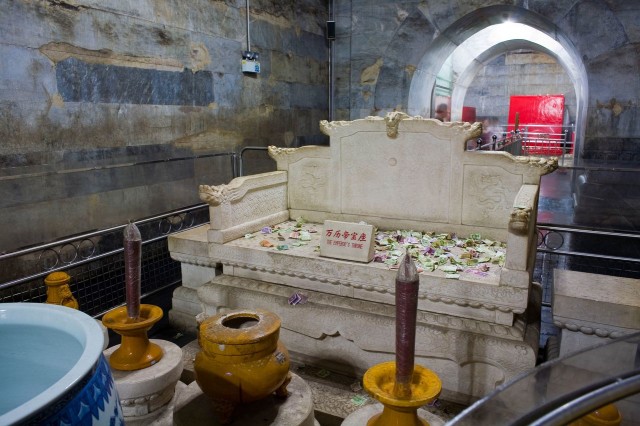
With the intention of housing every one of Beijing’s population of 6 million, Mao Zedong began building Dìxià Chéng, The Underground City, in 1969. When finished, The Underground Great Wall as it is also known, encompassed 33 square miles, alternating between 30 and 60 feet under the ground.
Dìxià Chéng was waterproof, gas-proof, and built to withstand biological and nuclear attacks.
It is so large that in its heyday it contained all of the things other bunkers do like medical facilities, but also included restaurants and movie theaters and even factories and a farm. There were almost 90 known entrances and it was rumored that it was far more, with most residences being near a trap door that would lead to the tunnels. Most of the known entrances were in stores in the shopping districts and it is assumed that major landmarks and government buildings had entrances.
It was closed for some time, but in 2000 was opened for tours. Since 2008, however, it has been closed for repairs. Still, parts of it are used by residents to keep cool in summer and portions have been repurposed as stores and theaters.
Not much is known about the Shanghai Complex. In 2006, several news outlets reported that a 1 million square foot complex was being built under Shanghai that could house 200,000 people during a nuclear attack. The complex was connected by tunnels to apartments, office building, shopping/entertainment centers, and the subway. It was supposed to be able to sustain life for two weeks. No more has been said about it since 2006.
1. Switzerland: Sonnenberg Tunnel
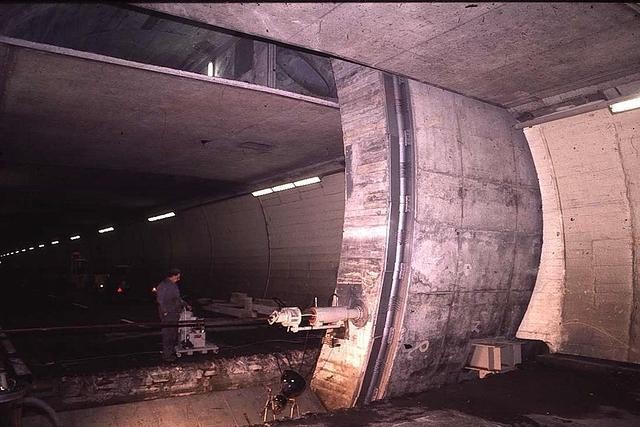
The neutral Swiss, being ever innovative and practical, not to mention above the rest of the world’s nuclear shenanigans, have an ingenious way of protecting their citizens should one of the rest of our nations deploy the bomb. Like nearly everything the Swiss make, it’s multipurpose.
The Sonnenberg Tunnel, a 1550 meter motorway tunnel in Lucerne, will be plugged up on each end in the event of a nuclear attack. Those plugs are 350-ton concrete doors that take 14 hours to close. More than 20,000 Swiss can be protected from initial blast and the effects of radiation from a one megaton bomb detonated within one mile.
This shelter has been fully tested. Operation Ant, a test performed 1987, gave Swiss officials an idea of what works well in the bunker and what doesn’t.
The bunker contains the usual facilities, and also a 12 prisoner jail and an operating theater for surgery. Special colored lights indicate whether it is night or day as smoothly as a Swiss timepiece. Soothing music is pumped throughout the bunker, but no “hard rock”. But, if you can’t stand the music, you can ask one of your 64 roommates to turn off the speakers in your bunkroom.
The Sonnenberg is the largest, but not the only, shelter in Switzerland. It is Swiss policy that every citizen be provided shelter. Most homeowners have one, as they are required to by law, but there are also many public shelters.
Sadly, the Sonnenberg was being dismantled as of 2007. The door would not shut properly during testing and that doesn’t bode well for keeping out nasty fallout or biological or chemical weapons.
Lucky for travelers and bunker enthusiasts, the underground complex is still open for tours. All seven floors are open for tour. Should disaster strike during the tour, the Sonnenberg is still equipped to house a more manageable 2000 people, so your tour group should be covered.
Sources:
- http://www.businessinsider.com/chinas-impenetrable-underground-bunkers-2012-6?op=1
- https://en.wikipedia.org/wiki/Bunker
- http://www.bathchronicle.co.uk/Corsham-bunker-fit-Queen-Britain-come-nuclear/story-17816655-detail/story.html#ixzz43V1LPZKU
http://www.burlingtonbunker.co.uk/ - http://www.atlasobscura.com/places/wiltshire-secret-underground-city
- https://en.wikipedia.org/wiki/The_Greenbrier
- http://www.greenbrier.com/
- https://en.wikipedia.org/wiki/Project_Greek_Island
- http://www.washingtonpost.com/wp-srv/local/daily/july/25/brier1.htm
- https://en.wikipedia.org/wiki/Metro-2
- https://whitehouse.gov1.info/raven-rock/
- https://en.wikipedia.org/wiki/Raven_Rock_Mountain_Complex
- https://news.google.com/newspapers?id=F-YhAAAAIBAJ&sjid=C2QEAAAAIBAJ&pg=4930,2520866&dq=underground-pentagon&hl=en
- http://aboutsiter.blogspot.com/
- https://en.wikipedia.org/wiki/Cheyenne_Mountain_Complex
- http://www.telegraph.co.uk/news/1525265/Shanghai-builds-vast-bunker-to-shield-against-terrorism-attack.html
- http://www.nbcnews.com/id/14122878/ns/world_news-asia_pacific/t/shanghai-completes-huge-underground-bunker/#.Vu-shfkrLIU
- https://en.wikipedia.org/wiki/Underground_City_(Beijing)
- http://www.nytimes.com/1987/11/27/world/swiss-ready-to-face-armageddon-in-comfort.html
- http://news.bbc.co.uk/2/hi/programmes/from_our_own_correspondent/6347519.stm
